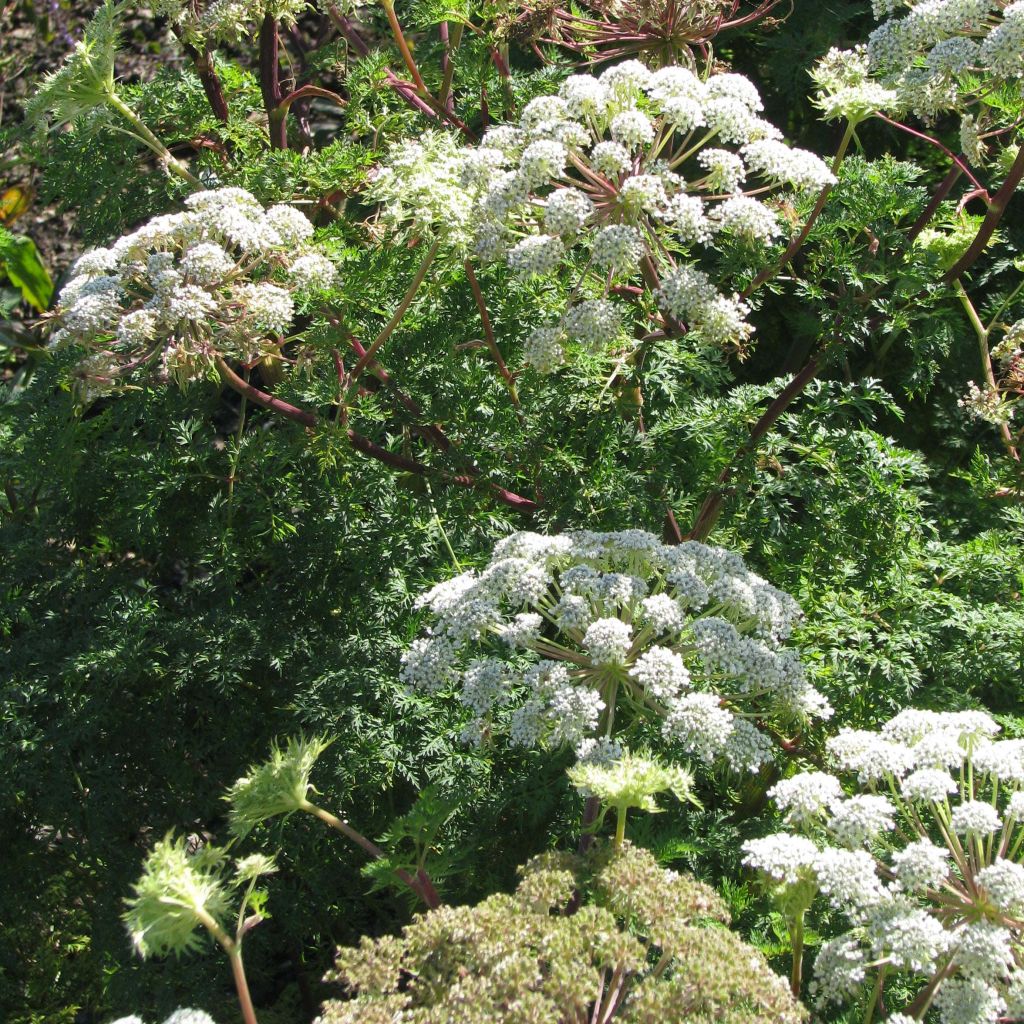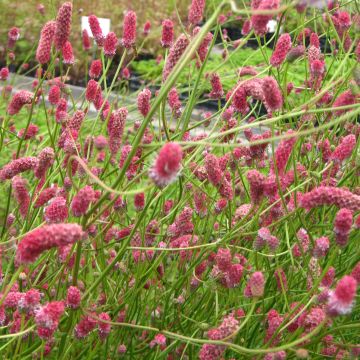

Selinum wallichianum


Selinum wallichianum


Selinum wallichianum
Selinum wallichianum
Selinum wallichianum
Wallich Milk Parsley
I'm looking forward to the blooming for sure this year. The plant has developed very well.
Magali, 30/01/2024
Special offer!
Receive a €20 voucher for any order over €90 (excluding delivery costs, credit notes, and plastic-free options)!
1- Add your favorite plants to your cart.
2- Once you have reached €90, confirm your order (you can even choose the delivery date!).
3- As soon as your order is shipped, you will receive an email containing your voucher code, valid for 3 months (90 days).
Your voucher is unique and can only be used once, for any order with a minimum value of €20, excluding delivery costs.
Can be combined with other current offers, non-divisible and non-refundable.
Home or relay delivery (depending on size and destination)
Schedule delivery date,
and select date in basket
This plant carries a 12 months recovery warranty
More information
We guarantee the quality of our plants for a full growing cycle, and will replace at our expense any plant that fails to recover under normal climatic and planting conditions.

Would this plant suit my garden?
Set up your Plantfit profile →
Description
Selinum wallichianum impresses with its size, the strength of its gracefully tiered structure, and its extreme elegance. This queen of umbellifers forms large, almost spherical, white inflorescences in summer, woven with lace and remarkably formed, carried by purple-green stems. They emerge from finely cut foliage of a beautiful tender green, contrasting with red petioles. The foliage resembles that of ferns. Hardy and perennial in deep and moist soil, this mountain plant thickens over time until it becomes the true focal point of a bed, and the rare subject that turns a perennial enthusiast's garden into that of a connoisseur.
Selinum wallichianum, formerly named Selinum tenuifolium, is a tall rhizomatous and deciduous herbaceous perennial native to the Himalayas. Related to carrot and celery, this herbaceous plant from the Apiaceae family grows spontaneously in meadows, among bushes and on grassy slopes, at an altitude between 2600 and 4200m (8530 and 13779ft). The plant emerges from the ground quite late in spring. It first produces ground-level foliage, then the stems rise while developing a succession of leafy tiers. At maturity, it forms an imposing hemispherical clump measuring 90cm (35in) to 1.2m (4ft) tall and 45cm (18in) wide when in flower and under good growing conditions. Its triangular, finely dissected leaves of a tender green shade are carried by dark red petioles. Flowering occurs from July to September. Reddish-purple branching stems rise well above the foliage, unfurling like croziers. They bear large buds that straighten up and eventually open into roundish umbels, composed of tiny white flowers. They can reach 20cm (8in) in diameter and are curiously made up of small spheres carried by pinkish to greenish stems, arranged in rays. This umbelliferous plant, resistant to cold down to -15°C (5°F), dies down in winter to reappear in spring.
Selinum wallichianum is above all a plant with a unique sculptural appearance. It should be given a prominent position in a bed composed of plants with the same requirements: Filipendula rubra 'Venusta', Echinacea 'Big Sky Sunrise', or Astrantia major 'Claret', for example. In front of its imposing silhouette, in well-drained soil, one can place for example Sedum 'Vera Jameson' or S. 'Bertram Anderson', or a perennial geranium like 'Sea Spray' or the almost black 'Purple Haze', to play with the colour and texture of foliage and flowers. In mild climates, aciphylla, with its very thin foliage, can also provide an interesting contrast. Libertia peregrinans, like a copper grass in autumn, could also accompany this astonishing selinum. It is sometimes said to be a bit capricious, dying down if its preferred conditions are not met. However, other gardeners report that this perennial has faithfully accompanied them for over 15 years.
Report an error about the product description
Selinum wallichianum in pictures




Flowering
Foliage
Plant habit
Botanical data
Selinum
wallichianum
Apiaceae
Wallich Milk Parsley
Himalayas
Other Perennials A to Z
View all →Planting and care
Selinum wallichianum should be planted in spring or autumn, in full sun or partial shade, in deep, fertile, well-prepared, and properly drained soil. Good drainage is necessary to increase the hardiness and lifespan of the plant, which tolerates clay well in climates where winters are not too severe. Native to mountainous regions, this perennial will benefit from a good blanket of snow in mountain gardens, which should effectively protect it from the cold. In richer and moister soils, this selinum will be truly impressive. It is a very long-lived plant that does not appreciate being moved. Choose its location carefully from the start, or transplant it while still young during the winter dormancy period. It self-seeds quite easily in light soil, but the seeds quickly lose their viability. This imposing plant does not require staking, demands no special maintenance, and has few enemies.
Planting period
Intended location
Care
Planting & care advice
-
, onOrder confirmed
Reply from on Promesse de fleurs
Similar products
Haven't found what you were looking for?
Hardiness is the lowest winter temperature a plant can endure without suffering serious damage or even dying. However, hardiness is affected by location (a sheltered area, such as a patio), protection (winter cover) and soil type (hardiness is improved by well-drained soil).

Photo Sharing Terms & Conditions
In order to encourage gardeners to interact and share their experiences, Promesse de fleurs offers various media enabling content to be uploaded onto its Site - in particular via the ‘Photo sharing’ module.
The User agrees to refrain from:
- Posting any content that is illegal, prejudicial, insulting, racist, inciteful to hatred, revisionist, contrary to public decency, that infringes on privacy or on the privacy rights of third parties, in particular the publicity rights of persons and goods, intellectual property rights, or the right to privacy.
- Submitting content on behalf of a third party;
- Impersonate the identity of a third party and/or publish any personal information about a third party;
In general, the User undertakes to refrain from any unethical behaviour.
All Content (in particular text, comments, files, images, photos, videos, creative works, etc.), which may be subject to property or intellectual property rights, image or other private rights, shall remain the property of the User, subject to the limited rights granted by the terms of the licence granted by Promesse de fleurs as stated below. Users are at liberty to publish or not to publish such Content on the Site, notably via the ‘Photo Sharing’ facility, and accept that this Content shall be made public and freely accessible, notably on the Internet.
Users further acknowledge, undertake to have ,and guarantee that they hold all necessary rights and permissions to publish such material on the Site, in particular with regard to the legislation in force pertaining to any privacy, property, intellectual property, image, or contractual rights, or rights of any other nature. By publishing such Content on the Site, Users acknowledge accepting full liability as publishers of the Content within the meaning of the law, and grant Promesse de fleurs, free of charge, an inclusive, worldwide licence for the said Content for the entire duration of its publication, including all reproduction, representation, up/downloading, displaying, performing, transmission, and storage rights.
Users also grant permission for their name to be linked to the Content and accept that this link may not always be made available.
By engaging in posting material, Users consent to their Content becoming automatically accessible on the Internet, in particular on other sites and/or blogs and/or web pages of the Promesse de fleurs site, including in particular social pages and the Promesse de fleurs catalogue.
Users may secure the removal of entrusted content free of charge by issuing a simple request via our contact form.
The flowering period indicated on our website applies to countries and regions located in USDA zone 8 (France, the United Kingdom, Ireland, the Netherlands, etc.)
It will vary according to where you live:
- In zones 9 to 10 (Italy, Spain, Greece, etc.), flowering will occur about 2 to 4 weeks earlier.
- In zones 6 to 7 (Germany, Poland, Slovenia, and lower mountainous regions), flowering will be delayed by 2 to 3 weeks.
- In zone 5 (Central Europe, Scandinavia), blooming will be delayed by 3 to 5 weeks.
In temperate climates, pruning of spring-flowering shrubs (forsythia, spireas, etc.) should be done just after flowering.
Pruning of summer-flowering shrubs (Indian Lilac, Perovskia, etc.) can be done in winter or spring.
In cold regions as well as with frost-sensitive plants, avoid pruning too early when severe frosts may still occur.
The planting period indicated on our website applies to countries and regions located in USDA zone 8 (France, United Kingdom, Ireland, Netherlands).
It will vary according to where you live:
- In Mediterranean zones (Marseille, Madrid, Milan, etc.), autumn and winter are the best planting periods.
- In continental zones (Strasbourg, Munich, Vienna, etc.), delay planting by 2 to 3 weeks in spring and bring it forward by 2 to 4 weeks in autumn.
- In mountainous regions (the Alps, Pyrenees, Carpathians, etc.), it is best to plant in late spring (May-June) or late summer (August-September).
The harvesting period indicated on our website applies to countries and regions in USDA zone 8 (France, England, Ireland, the Netherlands).
In colder areas (Scandinavia, Poland, Austria...) fruit and vegetable harvests are likely to be delayed by 3-4 weeks.
In warmer areas (Italy, Spain, Greece, etc.), harvesting will probably take place earlier, depending on weather conditions.
The sowing periods indicated on our website apply to countries and regions within USDA Zone 8 (France, UK, Ireland, Netherlands).
In colder areas (Scandinavia, Poland, Austria...), delay any outdoor sowing by 3-4 weeks, or sow under glass.
In warmer climes (Italy, Spain, Greece, etc.), bring outdoor sowing forward by a few weeks.



























































